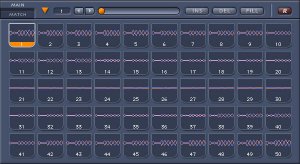Firium Linear Phase EQ VST RTAS v2.1.2.1 x86


x86 | 01.03.2008 | 4.3 MB
Firium is a specialised stereo mastering EQ that uses Finite Impulse Response filters (FIR — hence its name, I gather), also known as linear-phase filters, and a clever graphical interface to deliver transparent equalisation with extremely precise control. Indeed, since filters of this type introduce a noticeable processing delay, they tend to be used in mastering plug-ins rather than channel plug-ins. If you decide to use Firum for an individual stereo pair of channels anyway, you will find a useful delay indication in the main display (this is invaluable if your host does not have automatic plug-in delay compensation). I tested Firium in the Soundscape Editor v4.0 and in Cubase SX 2.0, and the delay was reported as 3072 samples at 44.1kHz and 6144 samples at 96kHz in both programs, on a 1GHz Pentium III PC. The claimed benefit of FIR filters is that the audio does not suffer degradation through phase shift, and indeed Firium is extremely transparent and 'respectful' of the source material. It does not flatter by superimposing its own character on the audio, but nor does it introduce unpredictable artifacts alongside the correction that you apply.
Operationally, Firium is reminiscent of a graphic equaliser, in that you can draw a curve in the graph using 50 'control points' that span the frequency range. However, the facilities on offer far exceed those of a traditional graphic EQ. The curve can be shaped in a number of ways. Clicking above or below a control point will cause it to jump to the clicked position. The whole curve can also be drawn freehand by dragging the mouse in the graph. Finer adjustments can then be made by dragging individual control points, or by using the automatic Smooth function, which can be applied repeatedly if necessary. When the mouse pointer is directly on a control point, a circle appears around it to indicate 'coupling mode', in which dragging that control point will also move its neighbours according to a Gaussian (smooth) or geometric (more 'pointy') curve. The degree of coupling can be adjusted. Finally, in 'dynamic mode', the selected (circled) control point is dragged up or down to adjust the gain for the corresponding frequency, while dragging the mouse pointer horizontally will expand or narrow the filter. Further editing can be applied globally: the whole curve can be moved along the gain or frequency axis by using cursors, scaled, or inverted. Two buttons also allow you to move along the history of changes you have made.
